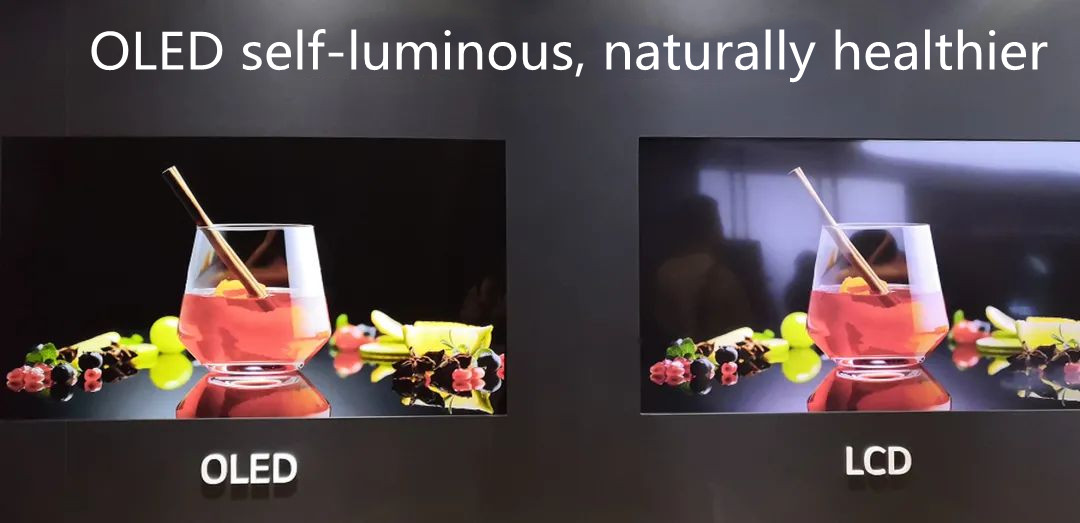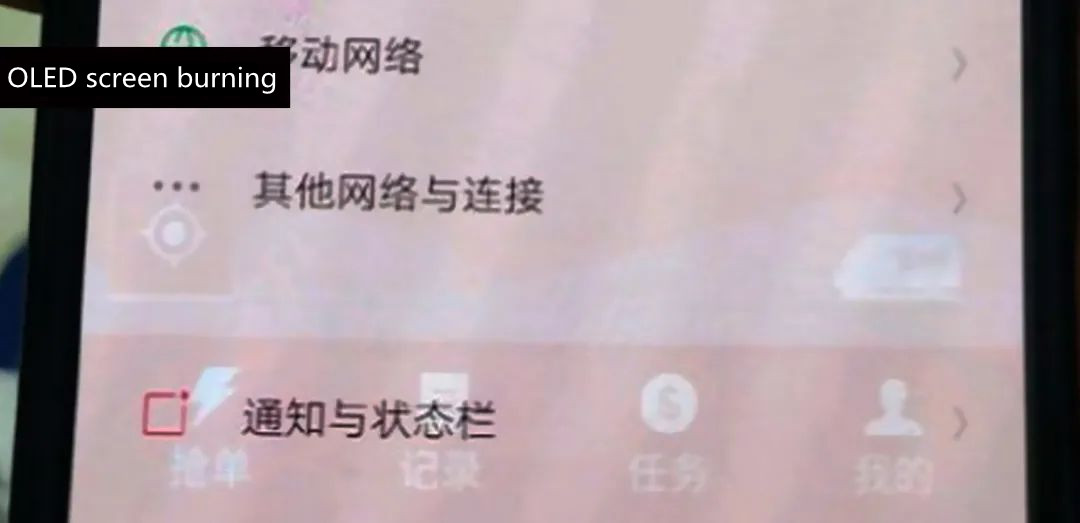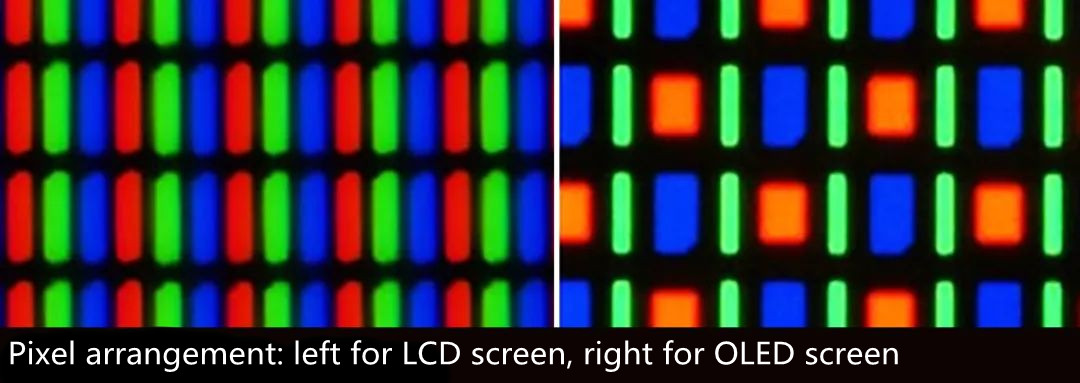Strobe, because OLED often uses PWM dimming to quickly switch the screen light source for dimming, although the human eye is not aware of, but in slow motion, its screen is flickering at a fixed frequency, low frequency is particularly harmful. The splash screen will have an obvious irritation to the user's eyes, coupled with the high contrast of the OLED screen, for the "stay up party" (OLED mobile phone users), the OLED screen has a great impact on eyesight.
Earlier, LCD display hardware also has an obvious splash screen phenomenon, under the guidance of relevant policies and consumer demand, manufacturers began to promote "no splash screen". For medium and heavy mobile phone and TV users, the strobe of OLED will cause serious visual fatigue and even cause migraine for users who use OLED display hardware.
In the display device, what screen to use directly affects people's perception and experience. No matter in the large screen, such as color TV, smart tablet, or in the small screen, such as mobile phone, most of them are liquid crystal screen (LCD). Nowadays, with the development of OLED screen technology, some high-end televisions and flagship phones are equipped with OLED screens, so is there a significant difference between LCD and OLED screens?
When LCD screen and OLED screen are used in TV sets, there are obvious differences in three aspects. The author thinks that the relationship between them is like the sun (OLED self-illumination) and the moon (LCD needs a backlight plate as an auxiliary light source). First of all, they are different display technologies, and there are essential differences in the principle of luminescence (not to repeat, the previous content is described).
Secondly, due to the different appearance and shape, the structure of LCD panel is more complex, so it is difficult to be extremely thin in thickness. OLED does not need a backlight, the structure is simpler, the body can be extremely slim, and it can even make a TV like paper. The flexible and flexible characteristics of OLED can be made into special-shaped screens such as curved screens with a stronger appearance plasticity.
Third, the color displayed by OLED is closer to the real world, especially in black scenes. When it displays a black scene, it just turns off the pixels and does not glow. It is really pure black. But LCD can not do this, almost all LCD TVs will leak light when showing black scenes.

The color gamut coverage value of OLED is relatively high, and NTSC is generally around 95%, which can provide nearly perfect natural color. Its visual angle can reach 178 ° and the picture is not distorted. No matter which angle you look at, you can enjoy outstanding pictures. It can directly control the light and dark changes of pixel points without the need to deflect the liquid crystal molecules like LCD. It performs well on high-speed dynamic pictures.
In the field of television, OLED screen has many advantages, but it is subject to the rate of good products. It can be successfully mass produced in the size of 55-65 inches, and the price is high. Due to the relatively mature technology development, LCD TV can produce larger size TV, and the price is not expensive. We can see that LCD TVs on the market have a wide range of sizes, ranging from 32 inches to 120 inches, and even larger sizes, but OLED TVs are mostly 55 inches.
2. Who is suitable for LCD phones or OLED phones?
Mobile phone products have become the fastest updating consumer electronics products. On mobile phones, buy LCD or OLED phones? You may be able to find the answer through the screen quality, service life and power consumption issues that consumers care about.
First of all, OLED displays better in contrast and black. Contrast refers to the ratio of white to black. The higher the contrast, the thicker the color of the picture. Because the LCD has a backlight layer, the display of black is not pure black. OLED black does not emit light. It can directly turn off some pixels in the black area, so the black display effect is more pure.
Secondly, LCD has more advantages in the service life that consumers care about. Why do you say that? Look at the problem of screen burning and flashing, and you will understand. Perhaps you would say that it is 2021 now, and OLED mobile phones will not have this situation, right? But in fact, according to the news exposed by the domestic and foreign media, the phenomenon of mobile phone screen burning still exists, but the technology is improving, and the probability of screen burning has also decreased significantly.

For example, changing the pixel arrangement of the screen can effectively increase the service life of the OLED screen, but the problem is that the display effect of the screen will decline. In contrast, LCD screen phones have no such problems at all. They not only have a long life, but also are more eye friendly.
LCD has the advantage of changing the power by changing the current/voltage to change the brightness of the mobile phone screen. This adjustment method is DC dimming. OLED uses PWM dimming. Compared with DC dimming, PWM dimming is in the form of alternating current, which is constantly powered on and off to adjust the brightness of the screen. Because the strobe is too fast, the human eye cannot capture the process of the screen lighting, but it can be seen intuitively by using mobile phone video.
Third, in terms of power consumption, OLED is more power-saving than LCD because its pixels work independently. When the LCD is turned on, the whole backlight layer is turned on. It is either turned on or off. Each pixel of OLED is independent, and some pixels can be lit separately, which can achieve screen display and greatly reduce the number of times the screen is lit.
In the field of mobile phones, OLED screens are widely used. OLED screens are used in screen fingerprints, off-screen cameras and folding mobile phones, but there are many mobile phone brands using LCD screens, which have their own positioning and development plans.
Write at the end
At present, LCD screen is still the mainstream of the market. OLED screen has limited the penetration of OLED TV, OLED mobile phone and other products due to high cost, fast aging, low yield and other reasons.
The following is a summary of the differences between LCD and OLED:
1. LCD inorganic material, OLED organic material, so OLED life is not as good as LCD
2. OLED is an organic material, and the pixels work independently, resulting in screen burning (the essence of screen burning is uneven screen aging)
3. OLED color is much better than LCD, OLED black is more pure, LCD black is dark gray
4. OLED screen has almost no drag shadow and is fast in response
5. The OLED screen adopts PWM dimming. When viewed at low brightness, stroboscopic will make light-sensitive people feel uncomfortable
6. OLED is more power-saving and thinner than LCD screen, and it can also be greatly bent
LCD has its own advantages over OLED screen. In fact, it is not difficult to make a decision on the choice of hardware. If you are sensitive to light and have low requirements for pure black color, the budget is limited, and the LCD screen hardware is more suitable for you. It is better to start with OLED technology when it is more mature. If you are not sensitive to light, pursue the fashion and artistic sense of products, have no economic pressure, and want to try new high-tech, then OLED screen hardware can meet your needs.





